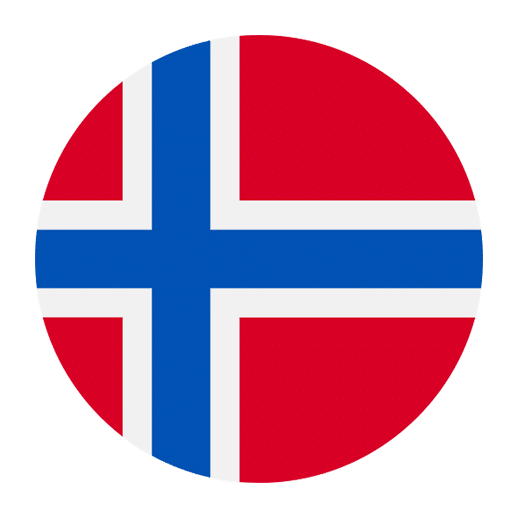Learning Norwegian can be an exciting and rewarding experience, especially if you’re interested in fields like building and construction. Whether you’re planning to work in Norway, collaborate with Norwegian-speaking colleagues, or simply expand your vocabulary, understanding the specific terms related to construction can be highly beneficial. This article will delve into essential Norwegian vocabulary for building and construction, helping you to navigate this technical field with confidence.
Basic Construction Terms
Before diving into more specialized vocabulary, it’s important to familiarize yourself with some basic construction terms. These foundational words will help you understand the broader context and make learning more specific terms easier.
– **Byggeplass**: Construction site
– **Bygging**: Building or construction
– **Bygningsarbeider**: Construction worker
– **Materialer**: Materials
– **Verktøy**: Tools
– **Plan**: Plan or blueprint
– **Prosjekt**: Project
– **Arkitekt**: Architect
– **Ingeniør**: Engineer
Common Construction Materials
In any building project, materials are key. Knowing the Norwegian terms for these materials will not only help you in practical situations but will also broaden your general vocabulary.
– **Tre**: Wood
– **Betong**: Concrete
– **Stål**: Steel
– **Murstein**: Brick
– **Glass**: Glass
– **Gips**: Plaster
– **Isolasjon**: Insulation
– **Plast**: Plastic
– **Metall**: Metal
– **Granitt**: Granite
Tools and Equipment
Tools are indispensable in any construction work. Knowing their names in Norwegian can help you understand instructions, communicate with colleagues, and ensure you have the right tool for the job.
– **Hammer**: Hammer
– **Sag**: Saw
– **Skrujern**: Screwdriver
– **Bor**: Drill
– **Målebånd**: Measuring tape
– **Vater**: Level
– **Spiker**: Nail
– **Skrue**: Screw
– **Tang**: Pliers
– **Skiftenøkkel**: Wrench
Job Titles and Roles
Understanding the various roles and job titles on a construction site can help you better comprehend the hierarchy and responsibilities of each position.
– **Prosjektleder**: Project manager
– **Byggeplassleder**: Site manager
– **Snekker**: Carpenter
– **Rørlegger**: Plumber
– **Elektriker**: Electrician
– **Murer**: Mason
– **Malermester**: Master painter
– **Kranfører**: Crane operator
– **Anleggsarbeider**: Construction worker
– **Byggmester**: Master builder
Phases of Construction
Construction projects typically go through several phases, each with its own set of tasks and vocabulary. Understanding these phases can help you follow along with project timelines and processes.
Planning and Design
The initial stages of any construction project involve thorough planning and design. Here are some key terms you might encounter:
– **Prosjektering**: Project planning
– **Design**: Design
– **Tegninger**: Drawings
– **Tillatelse**: Permit
– **Budsjett**: Budget
– **Kostnadsestimat**: Cost estimate
Groundwork and Foundation
Once the planning phase is complete, the groundwork and foundation stages begin. Here are some essential terms:
– **Grunnarbeid**: Groundwork
– **Fundament**: Foundation
– **Graving**: Excavation
– **Betongstøping**: Concrete pouring
– **Armering**: Reinforcement
– **Drenering**: Drainage
Structural Work
Structural work involves building the main framework of the structure. Understanding these terms is crucial for this phase:
– **Råbygg**: Shell construction
– **Bærekonstruksjon**: Load-bearing structure
– **Takstol**: Roof truss
– **Etasje**: Floor (level)
– **Vegger**: Walls
– **Tak**: Roof
Finishing Work
After the structure is built, the finishing work begins. This phase involves making the building habitable and aesthetically pleasing.
– **Innvendig arbeid**: Interior work
– **Gulvlegging**: Flooring
– **Maling**: Painting
– **Tapetsering**: Wallpapering
– **Elektriske installasjoner**: Electrical installations
– **VVS**: HVAC (Heating, Ventilation, and Air Conditioning)
– **Snekkerarbeid**: Carpentry work
Safety and Regulations
Safety is paramount on any construction site. Familiarizing yourself with safety terms and regulations will help you maintain a safe working environment.
– **Sikkerhet**: Safety
– **Verneutstyr**: Protective equipment
– **Hjelm**: Helmet
– **Arbeidssko**: Work boots
– **Sikkerhetssele**: Safety harness
– **Førstehjelp**: First aid
– **Brannsikkerhet**: Fire safety
– **Risikovurdering**: Risk assessment
– **Arbeidstilsynet**: Labor inspection authority
– **Forskrifter**: Regulations
Common Phrases and Expressions
Learning some common phrases and expressions related to construction can greatly enhance your ability to communicate effectively on a building site.
– **Kan du hente verktøyet?**: Can you fetch the tool?
– **Vi trenger mer betong.**: We need more concrete.
– **Hvor er tegningene?**: Where are the drawings?
– **Er dette i henhold til planene?**: Is this according to the plans?
– **Sikkerhet først!**: Safety first!
– **Når skal vi starte gravearbeidet?**: When will we start the excavation work?
– **Dette må godkjennes av ingeniøren.**: This needs to be approved by the engineer.
– **Hvordan går det med prosjektet?**: How is the project going?
– **Er vi i rute med tidsplanen?**: Are we on schedule?
– **Kan du måle dette for meg?**: Can you measure this for me?
Practice and Application
To effectively learn and retain this vocabulary, it’s important to practice and apply what you’ve learned. Here are some tips to help you integrate these terms into your language skills:
Flashcards
Create flashcards with the Norwegian term on one side and the English translation on the other. This technique is especially useful for memorizing vocabulary.
Language Exchange
Find a language exchange partner who is fluent in Norwegian and interested in learning English. Practicing with a native speaker can significantly improve your pronunciation and usage.
Practical Application
If you’re involved in construction work, try to use the Norwegian terms in your daily tasks. Label your tools in both English and Norwegian to reinforce your memory.
Online Resources
Utilize online resources such as language learning apps, websites, and forums dedicated to Norwegian. Many of these platforms offer specialized vocabulary lists and exercises.
Engage with Media
Watch Norwegian documentaries or shows related to construction. This will help you hear the terms used in context and improve your listening skills.
Join a Class
Consider enrolling in a Norwegian language course that focuses on technical vocabulary. Many institutions offer specialized classes for professionals.
Conclusion
Expanding your Norwegian vocabulary in the field of building and construction can open up numerous opportunities, both professionally and personally. By familiarizing yourself with these essential terms, you’ll be better equipped to navigate construction sites, communicate with colleagues, and understand technical documents. Remember, consistent practice and application are key to mastering any new language. Happy learning!

